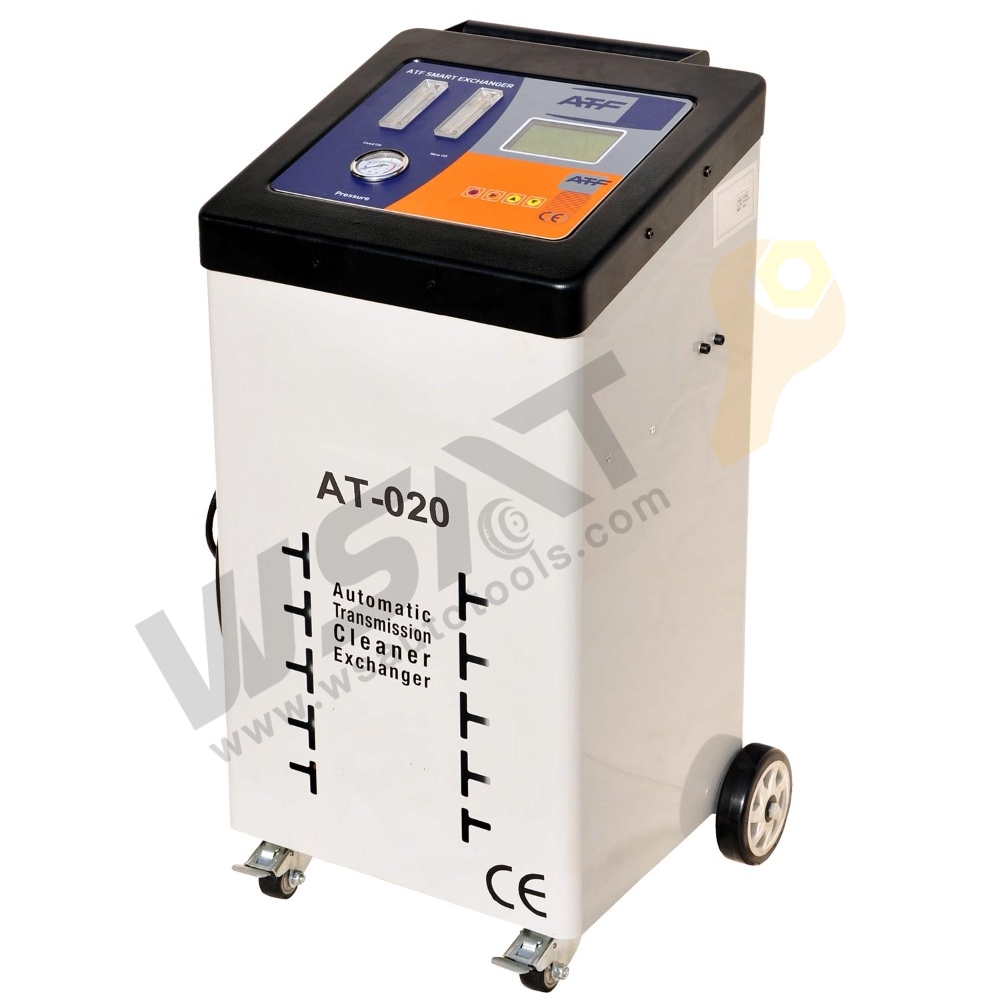Introduction to Transmission Oil Exchanger and Flusher
Winsen Auto Transmission Oil Exchanger and Flusher
Transmission oil exchangers and flushers are essential tools in vehicle maintenance, ensuring that the transmission system operates smoothly by keeping the oil clean and at optimal levels. Over time, transmission oil degrades due to heat, pressure, and friction within the transmission, leading to wear and reduced performance. Transmission oil exchangers and flushers help to prevent these issues by removing old, contaminated oil and replacing it with fresh, high-quality transmission fluid.
A clean transmission system ensures better gear shifting, smoother driving, and prolonged transmission life. In this article, we will explore the working principles, components, and the benefits of using these systems for regular maintenance.
Components of Transmission Oil Exchanger Systems
Transmission oil exchangers consist of several key components that work together to ensure efficient oil exchange:
Oil Pump: The oil pump is responsible for circulating the transmission fluid through the system. It creates the pressure required to push old oil out of the system and replace it with fresh oil.
Fluid Reservoir: This is where the used and new oils are stored during the exchange process. The reservoir holds the transmission fluid until it is pumped into the transmission or returned for disposal.
Oil Filters: Filters help trap debris, metal shavings, and contaminants from the oil, ensuring that clean fluid is circulated through the transmission system.
Valves: These regulate the flow of oil, allowing for smooth switching between old and new fluids during the flushing process.
Hoses and Connectors: These connect the exchanger to the vehicle's transmission and pump the oil in and out of the system.
These components work together to complete the oil change without manual intervention, offering a more efficient and effective process compared to traditional methods.
Winsen Automatic Transmission Oil Exchanger and Flush Cleaning
How Transmission Oil Exchangers Work?
The operation of a transmission oil exchanger involves several key stages that ensure the removal of old oil and the introduction of fresh fluid.
Here's how it works:
Step 1: Connecting the System
The exchanger is connected to the vehicle's transmission system via specialized hoses that link the pump and fluid reservoir to the transmission's oil cooler.
Step 2: Flushing the Transmission
The old transmission fluid is drawn out from the transmission system by the pump, which pushes it through a filtration system. The used oil is then stored in the fluid reservoir for proper disposal.
Step 3: Introducing Fresh Oil
At the same time, new transmission fluid is pumped into the transmission system, replacing the old fluid. This ensures that the transmission operates with clean, high-quality fluid.
Step 4: Final Check
Once the fluid exchange is complete, the system is checked for proper oil levels and functionality. The system may also be flushed again to ensure no old fluid remains in the system.
By using this automated process, the exchanger ensures a complete and thorough oil change, reducing the risk of contamination and extending the life of the transmission.
FAQs about Transmission Oil Exchangers
Q1: How often should I change my transmission oil?
It is generally recommended to change your transmission oil every 30,000 to 60,000 miles, depending on the vehicle manufacturer's guidelines and driving conditions. However, a transmission oil exchanger can help ensure the fluid is regularly maintained and replaced.
Q2: Is it necessary to flush the transmission system?
While not always necessary, flushing the transmission system can be beneficial if the oil has become contaminated or the transmission is not functioning properly. Flushing removes the old, degraded oil and ensures that the new fluid circulates freely, improving overall performance.
Q3: Can transmission oil flushes damage my car?
When performed correctly, a transmission oil flush is completely safe. However, improper flush procedures or using the wrong type of fluid can lead to issues. Always ensure that the oil exchanger and flush process is carried out by a professional using the recommended fluids for your vehicle.
Q4: What are the signs that my transmission oil needs to be changed?
Some signs include slipping gears, rough or hard shifting, a burning smell, or a delayed response when changing gears. If you notice these symptoms, it's important to check your transmission fluid levels and quality and consider using a transmission oil exchanger to perform a thorough oil exchange.
Conclusion
Transmission oil exchangers and flushers play a crucial role in vehicle maintenance by ensuring that the transmission system operates smoothly. Regular oil changes using these tools help remove contaminants and keep the fluid at optimal levels, leading to better performance, enhanced shifting, and prolonged transmission life. Understanding how these systems work and when to use them can prevent costly repairs and extend the longevity of your vehicle's transmission.
By investing in transmission oil exchange and flush services, vehicle owners can ensure that their transmissions remain in top condition, providing reliable performance for years to come.







